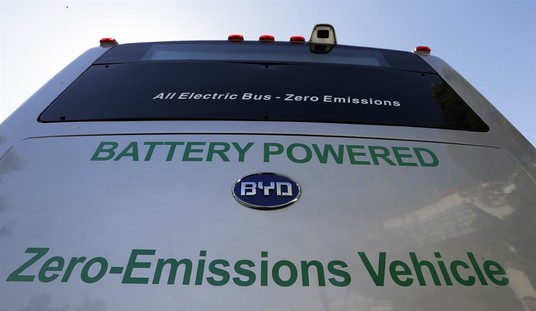While acknowledging that we have plenty of other pots bubbling away on the (non-gas) stove these days, it’s still worth looking at one of the worst potential crises on the horizon that involves something most of us take for granted. The supply of available fresh water in many parts of the United States and indeed around the world is not nearly as stable as we might like to think. Water is one of those things you might not think about very much until you suddenly don’t have any or your supply is contaminated. Then what do you do? In the case of Flint, Michigan over the past several years, you just learn to live with high lead levels. (Though the odds say you won’t live with it for as long.)
This isn’t just a question of pollution and contamination, however, though those are certainly valid concerns. The underlying reality is that there are simply too many people using too much fresh groundwater and nature can’t replace it quickly enough. And we’re very bad at water treatment in many areas, so the wastewater we generate isn’t usable for our most basic needs. This isn’t some fuzzy problem that’s still far in the distant future, either. A new report that came out this year from the Global Commission on the Economics of Water predicts that the global supply of fresh water will run 40% lower than the projected demand by the end of this decade.
The summer of 2022, one of the hottest and driest on record, has been hailed as a warning of things to come. With unprecedented floods, droughts, storms and heatwaves becoming more common across the world, we hear less and less about the chronic tragedy of the two billion people around the world suffering a water shortage with no access to safe water.
A new report by the Global Commission on the Economics of Water has found that the supply of freshwater on Earth will fall short of the demand by 40% before 2030. According to the report, areas that are water-constrained will suffer the most with “severe shortages.”
Increased scarcity of water also means reduced biodiversity and a failure to minimize the impacts of climate change, the report highlights.
This isn’t a situation where you have to rely on a single report from one group. There have been serious analysts screaming from the rooftops about this for years. Pew Charitable Trusts issued a map of global freshwater availability and demand back in 2019. Their analysis combined 14 years’ worth of NASA satellite data and graded all of the planet’s land masses, showing which areas were experiencing a net gain of freshwater in shades of blue and a net water loss in shades of red. If you click through and take a look, you will see that many parts of North America are doing “okay” for now, but the map has a lot more red than blue.
Even in America, though, groundwater levels have been steadily dropping. The US Geological Survey reports that groundwater levels have fallen as much as 100 feet in some areas since the start of the industrial era amid steady population growth. So in much of the United States, particularly in the East, there is still water in the ground, but you have to dig a lot deeper to reach it. And while current public water purification and reclamation plants are far better than they were a century ago, we still process and reuse only a small fraction of the water we take from the ground. Much of it eventually winds up in the sea where it is no longer desalinated or potable without using expensive and energy-intensive desalination technology.
This really isn’t a sustainable situation. Fresh, potable water remains the baseline requirement for life. You can last for weeks without food in some situations, but without water, your odds of making it longer than three days are very low. Returning to the Pew map linked above, the uneven distribution of freshwater globally carries another chilling implication. Everyone won’t run out of water at once. And when some people have water and others don’t, the history of our species informs us as to what happens next. Five years ago, we were being warned that the wars of our future will be fought over water, not oil.
In a new study, researchers tried to map out how water wars will emerge around the world and which countries are most likely to see a water-related conflict in the coming decades…
The paper was an attempt to illustrate where future water wars, or “hydro-political issues” might arise.
“Competition over limited water resources is one of the main concerns for the coming decades,” researchers wrote. The effects of climate change coupled with population growth are expected to drive competition for water, potentially exacerbating political tensions in parts of the globe.
That report has a map of its own, showing the places with the greatest and smallest water resources and how they might come into literal military conflict. It’s remarkably similar to the Pew map I mentioned above for obvious reasons. Desperate people do desperate things, and people without water are going to be the most desperate of all.
Traditionally, mankind has waged wars over territory. We’ve also fought quite a bit over religion. Both of those types of battles are still taking place to this day. But the nations with more robust water supplies are going to have to be prepared to defend themselves in the coming decades if one of these worst-case scenarios plays out. More than eight billion people around the globe rely on a viable water supply to survive. And there aren’t enough desalinators in existence to keep even ten percent of them alive.








